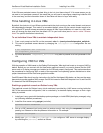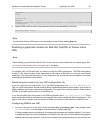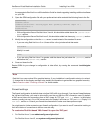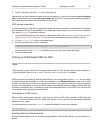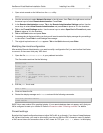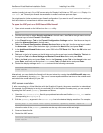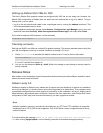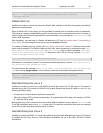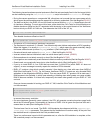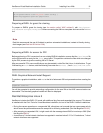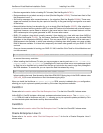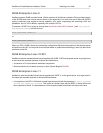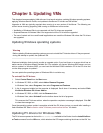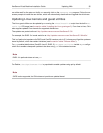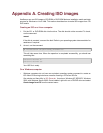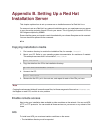
XenServer Virtual Machine Installation Guide Installing Linux VMs 30
The following issues have been reported upstream to Red Hat and are already fixed in the Xen kernel (which
can be installed by using the /mnt/Linux/install.sh script in the built-in xs-tools.iso CD image):
• During the resume operation on a suspended VM, allocations can be made that can cause swap activity
which cannot be performed because the swap disk is still being reattached. (Red Hat Bugzilla 429103).)
• The NetFront driver in the RHEL 4.5 and 4.6 kernel has issues with the iptables firewall due to the use
of checksum offloading. To work around this issue, either install the Citrix Tools for Virtual Machines or
disable checksum offload on the VIF associated with the device in the control domain of the XenServer
host on which your RHEL 4.6 VM runs. First determine the UUID of the VIF, by:
xe vif-list vm-name-label=examplevm
Then disable checksum offload on the VIF:
xe vif-param-set uuid=<vif_uuid> other-config:ethtool-tx=off
• A maximum of 3 virtual network interfaces is supported.
• The Xen kernel in versions 4.5, 4.6 and 4.7 can occasionally enter tickless mode when an RCU is pending.
When this triggers, it is usually in synchronize_kernel() which means the guest essentially hangs
until some external event (such as a SysRQ) releases it (Red Hat Bugzilla 427998)
• Occasional kernel crash on boot in queue_work() (Red Hat Bugzilla 246586)
• Incorrect network device initialization order can cause kernel panic on boot. (456653)
• Disks sometimes do not attach correctly on boot (Red Hat Bugzilla 247265)
• Live migration can occasionally crash the kernel under low memory conditions (Red Hat Bugzilla 249867)
• Guest kernel can occasionally hang due to other XenStore activity (Red Hat Bugzilla 250381)
• If you try to install RHEL 4.x on a VM that has more than 2 virtual CPUs (which RHEL 4.x does not
support), an error message incorrectly reports the number of CPUs detected.
• RHEL 4.7 contains a bug which normally prevents it from booting on a host with more than 64GiB of
RAM (Red Hat Bugzilla 311431). For this reason XenServer RHEL 4.7 guests are only allocated RAM
addresses in the range below 64GiB by default. This may cause RHEL 4.7 guests to fail to start even if
RAM appears to be available, in which case rebooting or shutting down other guests can cause suitable
RAM to become available. If all else fails, temporarily shut down other guests until your RHEL 4.7 VM
can boot.
Once you have succeeded in booting your RHEL 4.7 VM, install the Citrix Tools for Virtual Machines and
run the command:
xe vm-param-remove uuid=<vm_uuid> param-name=other-config \
param-key=machine-address-size
to remove the memory restriction.
• On some hardware (generally newer systems), the CPU will generate occasional spurious page faults
which the OS should ignore. Unfortunately all versions of RHEL 4 fail to ignore the spurious fault and it
causes them to crash (Red Hat Bugzilla 465914).
This has been fixed in our kernel. The RHEL 4 VM templates have been set with the suppress-spu-
rious-page-faults parameter. This assures that the installation will continue safely to the point that
the standard kernel is replaced with the Citrix-provided kernel.
There is a performance impact with this parameter set, so, after the VM installation is complete, at the
VM command prompt, run the command:



